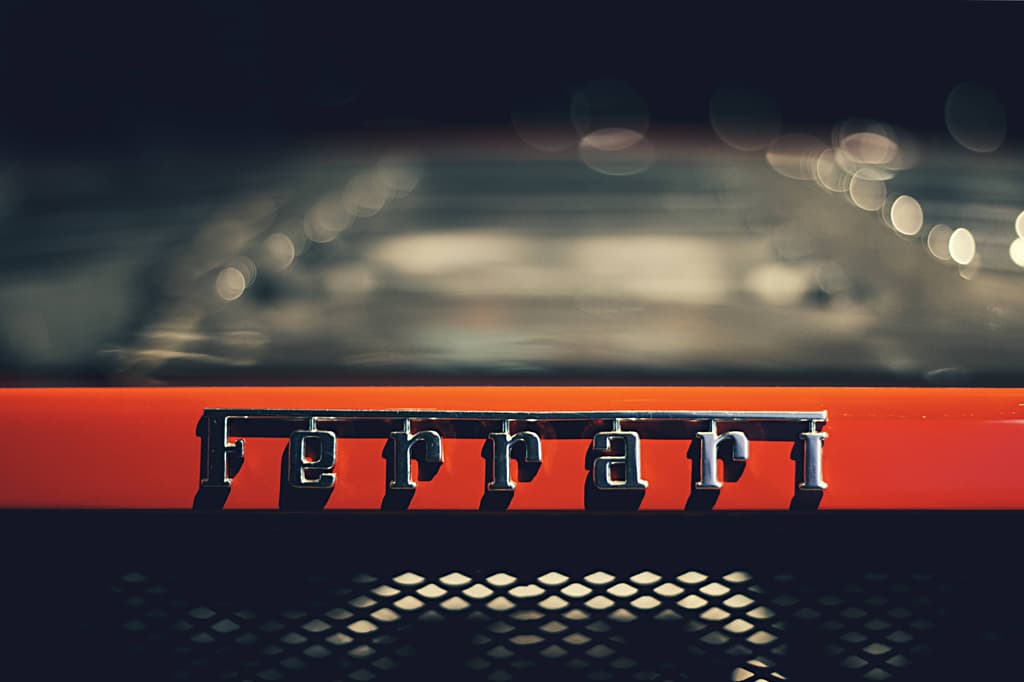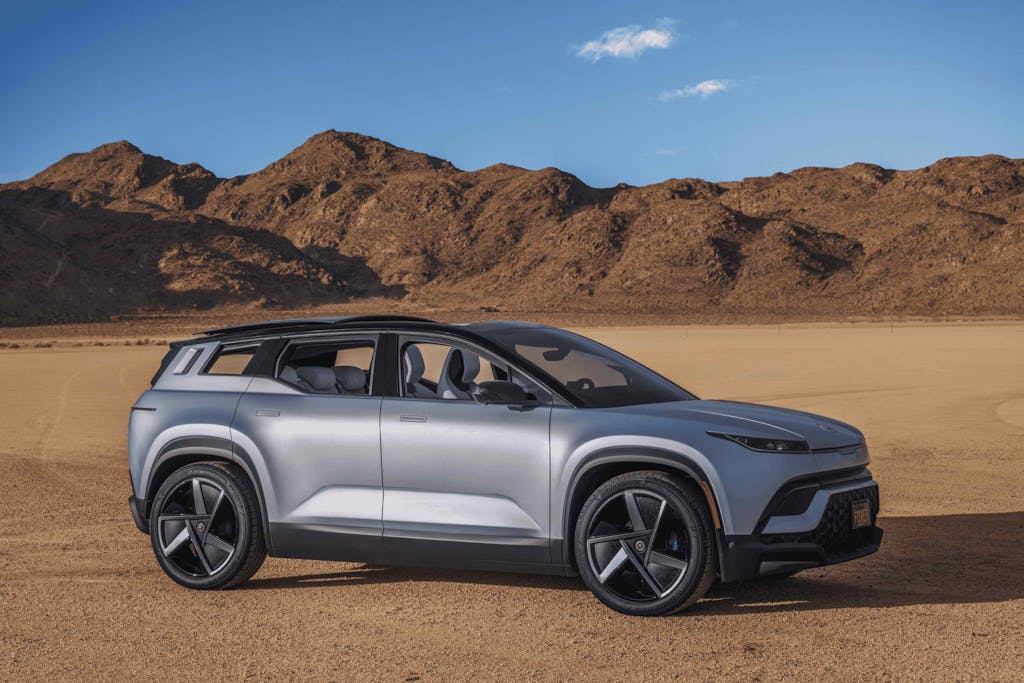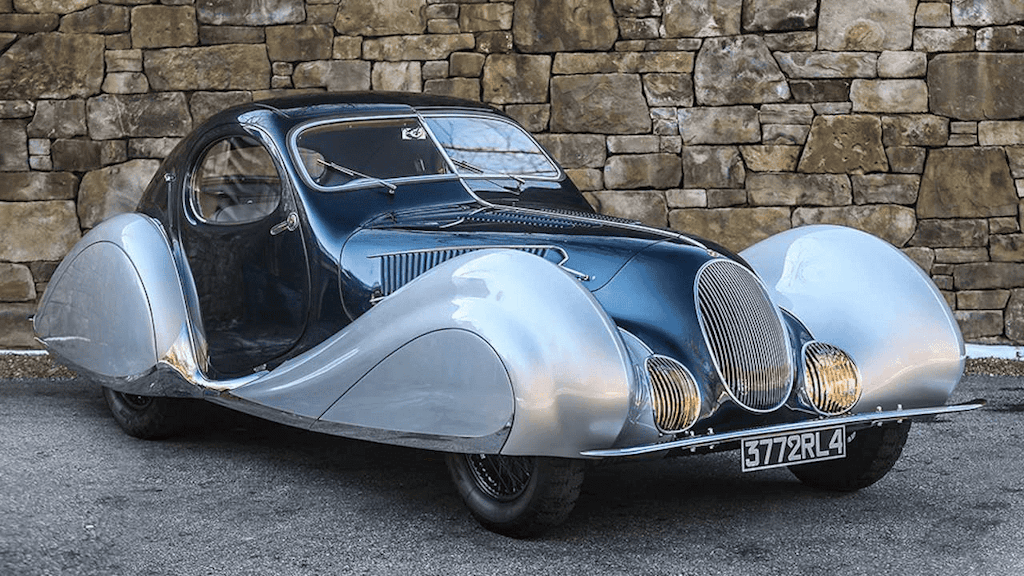Car News

Cars
Luxury Automotive Investments: Classic Cars and Hypercars for the Elite Collector
Fri Jun 13 2025
Introduction to Automotive Investment
The luxury automotive market
represents one of the most passionate and potentially rewarding alternative
investment sectors for sophisticated collectors. Beyond mere transportation,
investment-grade automobiles embody engineering excellence, design artistry,
and cultural significance that transcends traditional asset classes.
The global collector car market has matured into a sophisticated financial ecosystem supporting
systematic investment approaches. Professional services including
authentication experts, restoration specialists, storage facilities, and
insurance providers enable strategic automotive collecting that combines
passion with profit potential.
Successful automotive investment requires understanding market dynamics,
technical specifications, provenance research, and cultural significance.
The intersection of mechanical engineering, design aesthetics, and
historical importance creates unique opportunities for collectors who
develop comprehensive expertise and strategic vision.
Market Segments and Vehicle Categories
Pre-War Classics (1900-1945):
Early automotive history represents the pinnacle of craftsmanship and
exclusivity. Brands like Duesenberg, Bugatti, and Mercedes-Benz from this
era command exceptional prices due to rarity and historical
significance.
Coachbuilt vehicles from renowned designers like Figoni et Falaschi,
Saoutchik, and Touring provide unique combinations of engineering and
artistry unavailable in modern production.
Post-War Sports Cars (1945-1980):
Ferrari, Porsche, and Jaguar models from this golden era of sports car
development offer strong investment potential with proven track records.
Racing provenance significantly enhances values for competition
vehicles.
Landmark models like Ferrari 250 GTO, Porsche 917, and Jaguar D-Type
represent automotive investment blue chips with museum-quality status and
exceptional appreciation histories.
Modern Classics (1980-2005):
Supercars from this era including Ferrari F40, Porsche 959, and McLaren F1
have transitioned from depreciating assets to appreciating collectibles.
Limited production and technological significance drive values.
Contemporary Hypercars (2005-Present):
Modern hypercars like Bugatti Veyron, McLaren P1, and Ferrari LaFerrari
represent current pinnacle automotive technology with limited production
creating immediate collectibility.
Special Edition and Limited Production:
Manufacturer special editions and limited production runs often provide
strong investment potential when coupled with significant mechanical or
design improvements.
Blue-Chip Classics vs. Modern Hypercars
Classic Car Advantages:
Proven appreciation histories provide investment confidence with decades of
market data supporting valuation models. Blue-chip classics like Ferrari 250
series have demonstrated consistent long-term appreciation.
Historical significance and cultural impact create timeless appeal
transcending automotive trends. These vehicles represent automotive history
and engineering milestones.
Established collector communities and support networks provide market
liquidity and technical expertise. Classic car infrastructure including
restoration specialists and parts suppliers supports ownership.
Modern Hypercar Benefits:
Immediate usability without concerns about wear affecting value. Modern
reliability and safety systems enable regular enjoyment without preservation
concerns.
Warranty coverage and manufacturer support reduce ownership risks and
maintenance uncertainties. Authorized service networks provide professional
maintenance capabilities.
Advanced technology and performance often exceed classic capabilities
significantly. Modern materials and engineering provide capabilities
impossible in earlier eras.
Investment Considerations:
Classic cars require specialized knowledge for condition assessment and
authenticity verification. Market expertise becomes crucial for successful
classic car investment.
Modern hypercars offer transparency in specifications and condition but
face uncertain appreciation potential. Market maturity takes decades to
establish proven investment characteristics.
Authentication and Condition Assessment
Provenance Research:
Complete ownership history provides authenticity assurance and value
verification. Gaps in ownership records may indicate issues requiring
investigation.
Factory records and documentation verify original specifications and
options. Manufacturer heritage departments often provide build sheets and
delivery records for premium marques.
Racing history and notable ownership enhance values significantly.
Celebrity ownership, racing victories, and concours awards create provenance
premiums.
Technical Authentication:
Matching numbers verification ensures original engine, transmission, and
chassis components. Non-matching numbers significantly reduce values for
most collector vehicles.
Factory specifications confirmation prevents modification
misrepresentation. Original components command substantial premiums over
replacement parts.
Professional inspections by marque specialists identify authenticity
concerns and condition issues. Expert knowledge prevents costly mistakes in
acquisition decisions.
Condition Categories:
Concours condition represents pristine restoration or preservation to
factory specifications. These vehicles command maximum values but may
sacrifice originality for perfection.
Excellent original condition preserves factory finish and components while
maintaining functionality. Original paint and interiors often command
premiums over restored examples.
Driver quality provides functionality with some cosmetic imperfections.
These vehicles offer entry points to significant models while retaining
investment potential.
Project cars require substantial restoration investment but may provide
value opportunities for knowledgeable collectors willing to undertake
comprehensive restoration.
Storage and Maintenance Considerations
Climate-Controlled Storage:
Professional storage facilities provide optimal environmental conditions
preventing deterioration and maintaining values. Temperature and humidity
control protects mechanical components and cosmetic elements.
Security systems and professional handling prevent damage and theft.
Specialized automotive storage offers peace of mind for valuable
collections.
Private storage requires sophisticated environmental control and security
systems. Professional installation and monitoring ensure optimal
conditions.
Maintenance Programs:
Regular exercise and maintenance preserve mechanical functionality and
prevent deterioration. Professional maintenance by marque specialists
ensures proper care and preserves values.
Preventive maintenance programs minimize unexpected repairs and maintain
operational readiness. Systematic maintenance schedules preserve investment
value.
Exercise and Usage:
Regular operation prevents mechanical deterioration and maintains
functionality. Stored vehicles require periodic exercise to prevent seal
deterioration and mechanical problems.
Careful usage maintains condition while providing enjoyment. Excessive
mileage may affect values but total preservation eliminates ownership
pleasure.
Market Analysis and Valuation Methods
Auction Results Analysis:
Major auction houses provide transparent market data for comparable
vehicles. Recent sales establish market benchmarks adjusted for condition,
provenance, and specification differences.
Hammer prices plus buyer premiums represent true market values. Reserve and
estimate analysis provides additional market intelligence.
Private Sale Comparisons:
Dealer transactions and private sales often exceed auction results but
provide less market transparency. Professional relationships provide access
to private market intelligence.
Condition Adjustments:
Valuation models must account for condition differences between comparable
vehicles. Restoration costs and rarity affect premium and discount
calculations.
Market Trends Analysis:
Demographic changes affect collector preferences and market demand.
Generational shifts influence which vehicles appreciate and which
stagnate.
Economic conditions influence luxury spending and collector activity.
Market cycles affect timing for optimal acquisition and disposition
decisions.
Insurance and Risk Management
Agreed Value Coverage:
Specialized collector car insurance provides agreed value coverage
protecting against total loss scenarios. Regular appraisals maintain
appropriate coverage levels.
Usage restrictions and storage requirements may apply but provide premium
savings. Limited mileage and secure storage reduce insurance costs.
International Coverage:
Global coverage enables international events and transport. Rally
participation and concours events require specialized coverage
extensions.
Risk Mitigation:
Diversified collections reduce concentration risk while maintaining
collecting focus. Geographic and era diversification balance risk and return
potential.
Professional services including transport, storage, and maintenance reduce
operational risks. Established service provider relationships ensure quality
care.
Tax Implications and Structures
Collector Vehicle Status:
IRS collector vehicle classification provides certain tax advantages while
imposing usage restrictions. Professional guidance ensures compliance with
collector vehicle requirements.
Depreciation Considerations:
Appreciating collector vehicles may not qualify for depreciation deductions
even when used in business activities. Tax treatment varies based on usage
and intent.
Estate Planning:
Collector vehicle valuations for estate purposes require qualified
appraisers familiar with collector markets. Estate planning strategies
address unique automotive asset challenges.
Exit Strategies and Market Liquidity
Auction House Consignment:
Major auction houses provide global exposure and professional marketing for
exceptional vehicles. Seller commissions and timing considerations require
careful planning.
Reserve strategies protect against unfavorable market conditions while
estimates guide bidder expectations.
Dealer Networks:
Specialist dealers provide market access and discrete transaction
capabilities. Established relationships facilitate future acquisitions and
dispositions.
Private Treaty Sales:
Direct collector transactions minimize fees but require market knowledge
and professional assistance for documentation and transfer.
Emerging Trends and Future Opportunities
Electric and Hybrid Supercars:
Early electric supercars like Tesla Roadster and hybrid hypercars may
become collectible as automotive technology milestones. Early adoption
provides potential future rewards.
Younger Collector Demographics:
Millennial and Gen Z collectors prefer different vehicles than traditional
collectors. Japanese supercars, American muscle cars, and 1990s icons gain
popularity.
Digital Documentation:
Blockchain verification and digital documentation provide authenticity
assurance and ownership records. Technology integration enhances collector
confidence.
Conclusion
Ultra-luxury automotive investment combines mechanical passion with
financial opportunity, requiring specialized knowledge, professional
guidance, and strategic approach to vehicle selection and management.
Success depends on understanding market dynamics, technical expertise, and
commitment to proper care and preservation.
The evolving collector car market offers compelling opportunities for
sophisticated collectors seeking alternative investments providing both
driving pleasure and appreciation potential. Professional advisory services
and systematic approaches optimize collection building while managing risks
inherent in this specialized market.
FAQ Section
Q: What's the minimum investment for serious automotive
collecting? A: Entry-level collectible vehicles start around $50,000-100,000, but
significant classics typically require $250,000+ budgets. Modern hypercars
often exceed $500,000-1,000,000.
Q: Should I buy restored or original condition vehicles? A: Original condition vehicles often command premiums, but
restoration quality significantly affects values. Professional assessment
helps determine optimal choice for specific vehicles.
Q: How much does proper storage and maintenance cost? A: Professional storage costs $200-500 monthly per vehicle. Annual
maintenance typically ranges from $2,000-10,000 depending on vehicle
complexity and usage.
Q: Are modern supercars good investments? A: Limited production modern supercars may appreciate, but investment
potential remains unproven compared to established classics. Buy for
enjoyment first, investment second.
Q: How do I authenticate a classic car? A: Use marque specialists, verify matching numbers, research
provenance, and obtain professional inspections. Documentation and expert
knowledge prevent costly mistakes.

Cars
The All New EV Fisker Ocean SUV
Wed Nov 30 2022
The Fisker Ocean is an exciting new all-electric SUV from a startup California automaker that’s reinventing mobility for the 21st century. Created to be superbly designed, innovative, and sustainable, the Fisker Ocean is the first vehicle from a company co-founded by CEO Henrik Fisker, a noted designer and entrepreneur.
“We developed the Fisker Ocean to redefine what’s possible for an affordable EV, emphasizing the use of recycled materials wherever possible,” Henrik Fisker says. “This SUV has numerous unique features, including a 17.1-inch rotating central screen and a Solar Roof that can deliver 2,000 miles of additional, emission-free range every year, as well as California mode, which opens the vehicle’s windows and roof simultaneously to offer a convertible-like experience.”

Cars
This $13.4 Million Talbot-Lago Is Now the Most Expensive French Car Ever Sold at Auction
Tue Mar 15 2022
The car world was expecting big things from one particular 1937 Talbot-Lago earlier this month, and, well, the vintage ride did not disappoint.
The coveted T150-C-SS Teardrop Coupe in question—chassis No. 90107—sold for a record-breaking $13.4 million at Gooding & Company’s live auction at Florida’s Omni Amelia Island Resort on March 4. Shattering the pre-sale estimate of $10 million, it’s now the most valuable French car ever sold at auction and the most expensive Talbot-Lago in existence.
The high hammer price isn’t a total surprise. For starters, this Goutte d’Eau, or “Teardrop,” variant is one of only a handful to feature bodywork designed and fabricated Figoni et Falaschi. It’s also one of just two to sport elegant all-alloy Modèle New York coachwork, and the only such example with its exterior still intact.
Under the hood, meanwhile, lies a 4.0-liter inline-six engine with overhead valves and three Zenith-Stromberg carburetors that’s capable of churning out about 140 hp at 4,100 rpm. In addition, the coupe is fitted with a Wilson pre-selector gearbox, which allows the driver to “pre-select” the next gear, along with four-wheel mechanical brakes, a front independent suspension and a live rear axle. All of this combined was enough to render the T150-C-SS a real performance car for the time.

Cars
Concours d'Elegance Las Vegas
Thu Oct 28 2021
The MillionairesXchange team were very pleased to Sponsor the Las Vegas Concours d'Elegance this past weekend and a fabulous event it was.
The 2nd Annual Concours to take part in Las Vegas was at the new venue this year - Las Vegas Ballpark and What a Venue!!

Cars
1985 Porsche 930 Turbo 3.3
Wed Sep 01 2021
Introduced in 1975, the Porsche 930 is the first breed of 911 Turbo, at the time the fastest production car in the world and still today one of the most seductive sports cars. This particular example belongs to the second generation of the initial 930 which set in 1978 to feature an engine expansion to a 3.3 litre, an air-to-air intercooler allowing for a greater power output and reduced lag, along with brake units similar to the ones of the legendary 917 sports-racer. The body was also revisted in order to allow for the mechanical upgrades and the rear tail spoiler was slightly raised acquiring the nickname "tea tray" spoiler by enthusiasts.
The renewed Porsche 930 Turbo had a massive success that in fact a considerable amount of units were built. Variating in many colors and combinations it is uncommon to find such a spectacular example finished in Metal Blue paint, fabulously combined with a same Metal Blue leather interior. Manufactured in 1985, it was delivered new to France where it has resided all its lifetime. Acquired by four different owners who strongly preserved it to balance their common use and enjoyment. With 125,000km on the odometer the car features its original leather upholstery and carpet in an absolutely fresh looking condition. It is matching number and accompanied by service book and invoices.
Matching color.
Matching number.
Service book / invoices.
Original leather upholstery and carpet.
Sold new in France (4 French owners).
€ 125,000
Brand: Porsche
Model: 930
Variant: Turbo 3.3
Year: 1985
Exterior Color: Metal Blue
Interior Color: Blue
Gearbox: Manual
Fuel Type: Petrol
Mileage: 125,000 KM
Sold at: Monaco Legend Motors